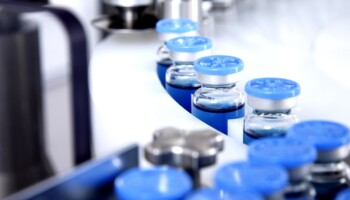Legislative process
On 19 July 2022, the European Commission (‘EC’) submitted a proposal for a Regulation on standards of quality and safety for substances of human origin intended for human application (‘SoHO Proposal’) to enhance safety standards for human substances, repealing the current Blood, Tissues and Cells (‘BTC’) legislative framework. The Current BTC legislative framework consists of the Blood Directive (Council Directive 2002/98/EC of 27 January 2003 setting standards of quality and safety for the collection, testing, processing, storage, and distribution of human blood and blood components) and the Tissues and Cells Directive (Directive 2004/23/EC of the European Parliament and of the Council of 31 March 2004 on setting standards of quality and safety for the donation, procurement, testing, processing, preservation, storage, and distribution of human tissues and cells).
On 24 April 2024, the EU Parliament approved the SoHO Regulation. Please find the official final text here. Now, the Council has to formally adopt the new SoHO Regulation which will then be published in the EU Official Journal. From then on, the SoHO Regulation will apply as of the mid of 2027 (i.e., 3 years after its publication and entry into force). However, certain provisions will apply after one additional year.
The importance of SoHOs for the ATMPs industry
ATMPs are medicines for human use that are based on genes, tissues or cells and potentially depend on several legal frameworks. ATMP (or medical devices) manufacturers use SoHOs as starting material and are obligated to comply with stringent and costly ATMP manufacturing-requirements (for example, GMP certification, obtaining marketing authorisation).
For example, both blood transfusions, plasma and tissues and cells play a vital role in the production of medicinal products. Consequently, donations through blood and tissue establishments are crucial for maximizing patient benefits. A more robust legislative framework, like the SoHO Proposal, is anticipated to positively influence innovation in the blood and tissue donation sector, fostering increased access to novel and innovative therapies.
Criticism on borderline classifications
The review of the current BTC legislative framework, outlined that several BTC products are often reclassified as ATMPs. Examples include cultured limbal cells, cultured keratinocytes, and isolated hepatocytes. This reclassification, coupled with the need to comply with ATMP legislation, were identified as potentially disproportionately affecting manufacturers who had previously delivered therapies before the requalification as an ATMP.
In conjunction with the foregoing, during the SoHO consultation, stakeholders highlighted recurring concerns, particularly regarding borderline qualifications. Feedback emphasized that regulatory uncertainty and complexity negatively impact investment in research and development, reducing innovation and interest from commercial actors in Europe. Also, a survey from 2018[1] identified divergent regulatory requirements as a primary challenge for European ATMP companies, with biotech SMEs facing difficulties in funding and compliance. Stakeholders reported significant costs associated with the reclassification of therapies as ATMPs, requiring them to obtain marketing authorization as medicines.
Please read our article (Lexxion: First Assessment of the SoHO Proposal for a New Legislation on Blood, Tissues and Cells (The SoHO Regulation) to delve into our detailed analysis of the Final Report reviewing the BTC legislation.
The role of the Committee for Advanced Therapies (‘CAT’)
The CAT acknowledges the challenges faced by the ATMP sector, highlighting the classification issues of borderline products subject to multiple and divergent quality and safety requirements. While the CAT plays a significant role in providing regulatory advice and classification guidance, it has limitations in its competence. The CAT can only offer guidance on the ATMP classification itself, lacking the authority to advise on whether a product should be considered a medicinal product, tissue, or cell. Additionally, the CAT’s recommendations may not be followed up on the national level, raising concerns about compliance. Due to this limited advisory scope, manufacturers face fragmented and incomplete guidance.[2]
Another concern arises from evolving borderline cases. An illustration of such a transformation is the CAT’s reclassification of cultured limbal cells, initially considered under the Tissues and Cells Directive, later becoming an ATMP following the CAT’s recommendation. Similarly, the classification of cultured keratinocytes has shifted over time, transitioning from an unregulated status in hospitals and research institutions to regulation under the Tissue and Cells Directive, and currently classified as an ATMP based on the CAT’s recommendation.
The SoHO Proposal’s solution – Consultation procedure in article 14
The SoHO proposal stipulates that, in situations of uncertainty regarding regulatory qualification of substances, products, or activities, authorities responsible for the SoHO legislation must seek consultation with other authorities governing alternative regulatory frameworks. Additionally, the authorities overseeing the SoHO legislation can seek an opinion from the SoHO Coordination Board (‘SCB’), as outlined in Article 14 and recital 24 which compiles and maintains its decisions in a compendium.
The above-mentioned provisional agreement of 14 December 2023 adds that “SoHO competent authorities involved in the consultation shall also consult the SoHO compendium, and consider any relevant regulatory status decision and take into account any relevant opinion included therein.” Moreover, the SoHO competent authorities may also, but are not obliged, submit a request to the SCB for an opinion on the regulatory status. Also, the SoHO competent authorise shall submit this request in “all cases where the consultations have not led to a decision on the regulatory status of such substance, product or activity in the Member State concerned. The SoHO competent authorities involved in the consultation shall take into account the opinion issued by the SCB following such a request.” The article adds that the EC has a similar competence of determining the regulatory status either after a duly substantiated request from a Member State following such consultation or on its own initiative.
Recital 24 of the SoHO proposal does entail a specific reference to the interplay with the ATMP legislation. It confirms that article 14 aims at ensuring a coherent procedure for determining the regulatory status of substances, products and activities in cases when there is doubt about the regulatory status of a particular substance, product or activity under this Regulation, namely when it concerns, medicinal products, or ATMPs.
Our recommendation
Ideally the text had addressed the remaining concerns regarding the regulatory status of substances, products, and activities. Also, the SoHO Regulation should have instituted a legal obligation for consulting the CAT on any ATMP-related classification issue and should have established a European-level hierarchy for borderline cases. The current complexity of collaboration in Article 14 may present challenges for pharmaceutical companies, necessitating consultations with multiple competent authorities in cases of regulatory status uncertainty. The ATMP classification, guided by the ATMP Regulation, grants the CAT the competence for (non-binding) scientific recommendations, yet the SoHO proposal lacks explicit provisions for robust collaboration with the CAT.
[1] R Ten Ham, J Hoekman, A Hovels, A Broekmans, H Leufkens, and O Klungel, ‘Challenges in Advanced Therapy Medicinal Product Development: A Survey among companies in Europe’, (2018).
[2] EMA, Reflection Paper on Classification of ATMP, 2014.



